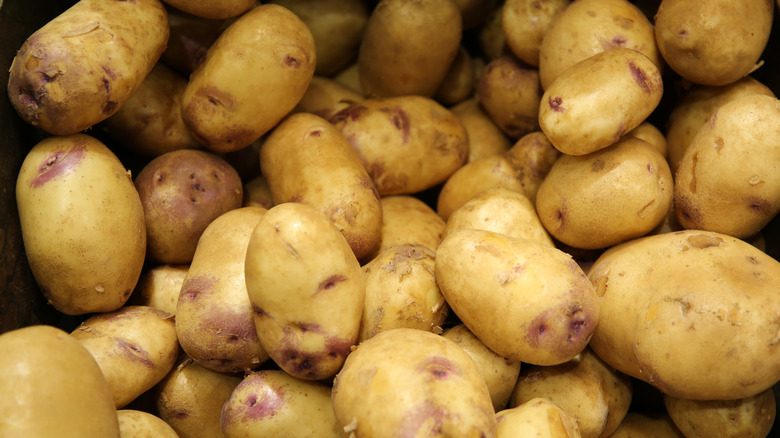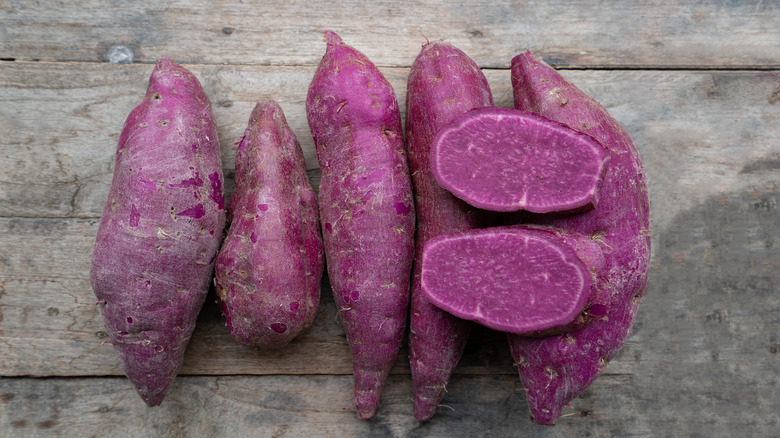Are Potatoes With Purple Spots Still Safe To Eat?
In a perfect world, every potato you purchase would be free of blemishes and discoloration. However, it's not uncommon to find spuds with spots, which can range from green to white to even purple in some cases. While some blemishes signal that a potato is not safe for eating, purple spots are a natural phenomenon that doesn't impact the quality of the vegetable.
It's all about air exposure, as slicing into a potato reveals the interior to the outside world. This elicits a reaction between certain chemical compounds and proteins inside the potato, which can cause the white flesh to become purple or even pink. While this form of discoloration is not harmful, you may find it displeasing from a visual perspective. In this case, you can concoct a solution of water and vinegar or lemon juice to soak the spuds in immediately after you slice them. This mixture will prevent color changes until you're ready to cook the potatoes.
Purple potatoes can be good for your health
Some potato varieties are intrinsically purple, such as Kestrels, which are mostly white with purple spots. There are also purple sweet potatoes that feature a purplish, pinkish interior after being sliced. A wildly popular variety within Okinawa, Japan, researchers posit that the vegetable could be the reason why so many elderly Okinawans enjoy remarkable health and have a longer lifespan than other people.
Both vegetables get their dazzling shade from anthocyanins, an organic compound that's associated with improved wellness. Lots of vibrant vegetables contain anthocyanins, including beets, blueberries, and pomegranates. Eating foods containing this compound is thought to have a positive impact on heart health and can also safeguard the brain against the effects of dementia. These benefits result from anthocyanins' ability to reduce inflammation throughout the body, which is believed to decrease a person's overall disease risk.
It's clear that purple potatoes can be a wholesome and delicious addition to your diet. However, other forms of discoloration should be approached with caution, as they often indicate spoilage.
Signs that a potato isn't safe to eat
While purple is a fine color for a potato, green spuds are something you should be wary of. Potatoes will turn green due to excess light exposure, which causes solanine levels to increase. A type of organic compound, consuming too much solanine is linked to health effects like abdominal discomfort and vomiting. Excess solanine also causes potatoes to taste bad, which means your delicious meal will be ruined due to an unpalatable potato.
Black spots on potatoes can also be problematic, as they usually signal the growth of mold on the vegetable. Keep in mind that the visible presence of mold indicates that the potato also contains invisible spores. That means the vegetable probably isn't safe to eat, even if you cut away any blemishes. Spoilage and mold growth can also affect the texture of the potato, as it will likely become much softer with loose, sagging skin. You can keep potatoes of all varieties fresh for longer by storing them in an area of the home protected against sun exposure and heat.


